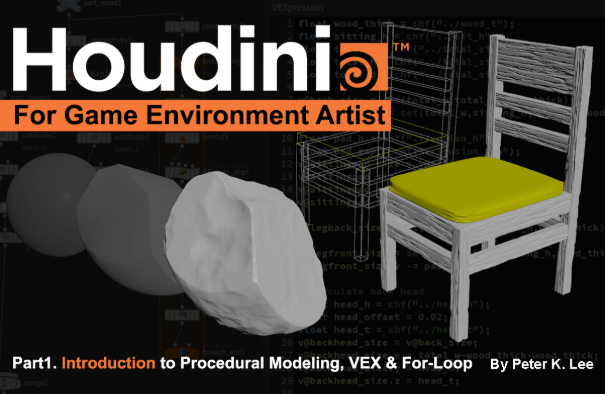![친절한 블렌더 - [LV.0] 입문 필수강의 썸네일](https://cdn.inflearn.com/public/courses/331390/cover/6540ab34-6b6c-43b1-8293-b9f5906071c7/331390-eng.png?w=420)
친절한 블렌더 - [LV.0] 입문 필수
codemod
블렌더를 처음 시작하는 사람부터 기초를 탄탄하게 쌓고 더 배우고 싶은 분들까지! 기본 기능의 원리와 자주 하게 되는 실수를 친절하게 알려드릴게요. 저와 함께 재미있는 블렌더의 세상으로 빠져볼까요?
입문
Blender, 3d-modelling, 3d-rendering
For background modelers who found Houdini daunting, this is a structure-focused introductory lecture created directly by a practitioner.

How to procedurally design and create background modeling using Houdini
Practice creating practical objects (stones, chairs, etc.) often used.
Learn all processes from structural design to Houdini implementation
Beyond Node Combination, Procedural Thinking and Practical Process
Practical application of mathematical concepts dealing with form (Vector, Random, Repetition)
Who is this course right for?
Background modeler: Knows nodes, practical use unclear.
Repeatedly creating similar assets, a practitioner who desperately needs an efficient method
A modeler who wanted to learn Houdini but felt VEX or loops were a barrier
Background modeler who needs to quickly create a large quantity of background objects in a small team
Practitioner seeking next-level modeling thinking
Need to know before starting?
Knowing just the basic concepts of 3D modeling like points, lines, and faces is enough.
You can follow along much more easily if you have experience with background modeling.
Don't fear math. I intuitively explain only the necessary parts.
26
Learners
6
Reviews
3
Answers
5.0
Rating
1
Course
12년 차 배경 아티스트 Peter 규영입니다.
블리자드 재직 중 디아블로4, 와우, 워크래프트 럼블 제작에 참여했고,
라이엇 게임즈에서 신규 프로젝트도 경험했습니다.
2023년엔 인디게임 <RP7>을 출시했습니다.
2013년 Unearthly Challenge 3D 배경 부문 최우수상 수상,
2018년 NDC· 2022년 언리얼 서밋 등에서 강연 경험도 있습니다.
현재 시애틀 스타트업 StudioSai에서 배경 팀장을 맡고 있습니다.
All
22 lectures ∙ (6hr 44min)
Course Materials:
All
6 reviews
5.0
6 reviews
Reviews 3
∙
Average Rating 4.0
5
간단한 오브젝트라서 따라하기 좋네요. 좀 더 디테일하게 2탄도 빨리 나왔으면 좋겠어요
우와 100% 수강하신 분은 처음입니다. 감사드립니다!
Reviews 4
∙
Average Rating 5.0
$42.90
Explore other courses in the same field!